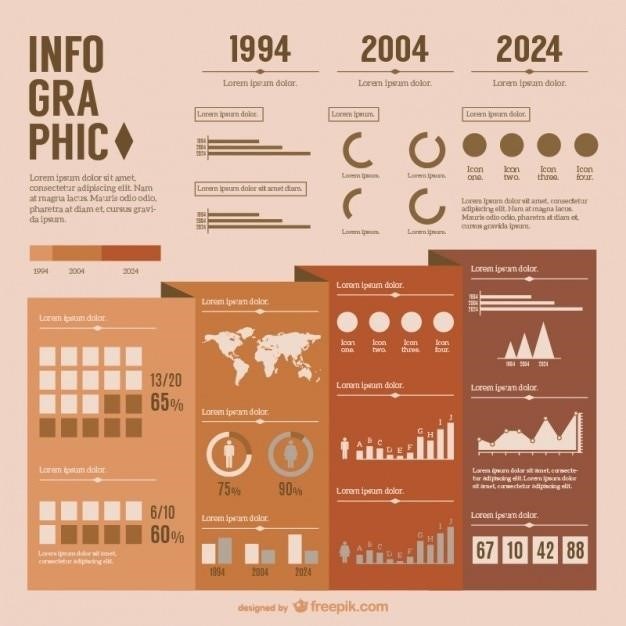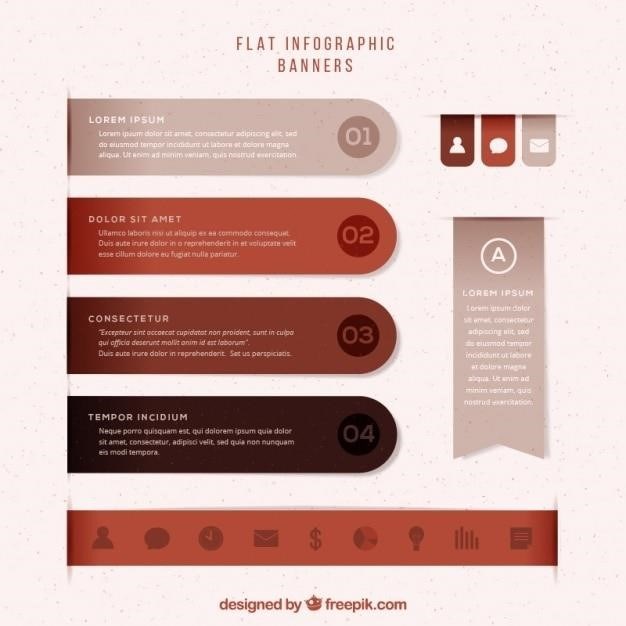Brown’s Stages of Language Development⁚ A Comprehensive Guide
Roger Brown’s stages of language development are a widely recognized framework for understanding the typical progression of a child’s language acquisition. These stages, based on the mean length of utterance (MLU) and the acquisition of grammatical morphemes, provide a roadmap for speech-language pathologists and educators to assess and support children’s language development. This comprehensive guide explores Brown’s stages, their implications, and their applications in various settings.
Introduction
Language development is a fascinating and intricate process that unfolds in stages, each marked by unique milestones and advancements. Understanding these stages is crucial for educators, parents, and speech-language pathologists (SLPs) alike, as it provides insights into the typical progression of language acquisition and helps identify potential developmental delays. One of the most influential frameworks for understanding early language development is Brown’s Stages of Language Development, a model proposed by Roger Brown in his seminal work “A First Language.” This model has become a cornerstone in the field of speech-language pathology and education, providing a structured approach to evaluating and supporting children’s linguistic abilities.
Brown’s Stages are not merely a chronological sequence; they represent a nuanced understanding of how children acquire the building blocks of language, from simple single words to complex grammatical structures. By analyzing the mean length of utterance (MLU) and the acquisition of specific grammatical morphemes, Brown’s Stages offer a valuable tool for gauging a child’s language proficiency and identifying areas that may require intervention. This guide will delve into the intricacies of Brown’s Stages, exploring each stage in detail, highlighting the key morphemes involved, and discussing the implications for SLPs and educators in supporting children’s language development.
Understanding Brown’s Stages
Brown’s Stages of Language Development provide a framework for understanding the typical progression of a child’s language acquisition, focusing on morphology and syntax, the rules governing word formation and sentence structure. These stages are not defined by chronological age but by the mean length of utterance (MLU), a measure of the average number of morphemes (meaningful units of language) in a child’s speech. As children progress through the stages, their MLU increases, reflecting their growing mastery of grammatical structures and their ability to produce more complex sentences.
Brown’s Stages are based on the observation that children acquire grammatical morphemes in a predictable sequence, with some morphemes appearing earlier than others. This sequence is not entirely rigid, as individual children may vary in their rate of development. However, the overall pattern of acquisition is consistent across children, providing a valuable benchmark for assessing language development. By analyzing a child’s speech sample, SLPs can determine their MLU and identify the specific morphemes they have acquired, providing insights into their language development and any potential areas of concern.
The Five Stages
Brown’s Stages of Language Development encompass five distinct stages, each characterized by a specific range of MLU and a set of grammatical morphemes typically acquired during that period. These stages provide a clear progression from simple one-word utterances to more complex sentences with embedded clauses and conjunctions. Here’s an overview of the five stages⁚
- Stage I (12-26 Months)⁚ This stage marks the emergence of two-word utterances, with an MLU ranging from 1.0 to 2.0 morphemes. Children begin to combine words to express simple ideas, such as “Mommy go” or “Doggie eat.”
- Stage II (27-30 Months)⁚ During this stage, children’s MLU increases to 2.0 to 2.5 morphemes. They start using grammatical morphemes like the present progressive “-ing” (e.g., “Mommy is going”), plurals “-s” (e.g., “Two dogs”), and prepositions “in” and “on” (e.g., “Ball in box”).
- Stage III (31-34 Months)⁚ Children’s MLU expands to 2.5 to 3.0 morphemes. They acquire more complex grammatical structures, including irregular past tense verbs (e.g., “He went”), possessive “-s” (e.g., “Mommy’s car”), and the use of “to be” as an auxiliary verb (e.g., “I am going”).
- Stage IV (35-40 Months)⁚ During this stage, children’s MLU reaches 3.0 to 3.75 morphemes. They begin to use articles “a” and “the” consistently, learn regular past tense verbs (e.g., “He walked”), and demonstrate an understanding of the use of “can” and “will” as auxiliary verbs.
- Stage V (41-46 Months)⁚ This final stage marks the acquisition of more complex grammatical structures, with an MLU of 3.75 to 4.5 morphemes. Children start using third-person singular present tense verbs (e.g;, “He eats”), learn to use “is” and “are” correctly, and demonstrate an understanding of complex sentence structures with embedded clauses.
Stage I (12-26 Months)
Stage I, also known as the “two-word stage,” marks the initial steps into the world of syntax. Children in this stage have an MLU ranging from 1.0 to 2.0 morphemes. Their vocabulary typically encompasses 50 to , and they begin to combine these words into simple two-word phrases or sentences. These utterances often convey basic requests, demands, or observations.
While Stage I focuses on the emergence of syntax, it’s important to note that children are still developing their understanding of the nuances of language. They may not always use grammatically correct structures, and their vocabulary is still limited. However, this stage lays the foundation for more complex language development in subsequent stages.
Examples of typical utterances in Stage I include⁚ “Mommy go,” “Doggie eat,” “Ball up,” and “No milk.” These simple phrases reflect the child’s growing ability to communicate basic ideas and needs through combining words.
Stage II (27-30 Months)
Stage II sees a significant leap in language development, with children now capable of producing more complex utterances. Their MLU increases to a range of 2.0 to 2.5 morphemes, demonstrating an expanding grasp of syntax and morphology. This stage is characterized by the emergence of grammatical morphemes, the building blocks of more sophisticated sentence structures.
Key morphemes that appear during Stage II include the present progressive “-ing” (e.g., “Mommy is eating”), the plural “-s” (e.g., “Two dogs”), and the prepositions “in” and “on” (e.g., “Ball in box,” “Book on table”). These morphemes, when used correctly, indicate a growing understanding of grammatical rules and the ability to express more nuanced meanings.
Children at this stage may also start to utilize auxiliary verbs like “is” and “are” in simple sentences. For example, they might say, “I am playing” or “The cat is sleeping.” This demonstrates their increasing ability to express temporal and relational information.
Stage III (31-34 Months)
Stage III marks a significant step forward in a child’s grammatical development, with their MLU expanding to between 2.5 and 3.0 morphemes. This stage witnesses the emergence of more complex sentence structures and the consistent use of several grammatical morphemes, signifying a deeper understanding of language rules and the ability to express more intricate ideas.
One notable development in Stage III is the acquisition of the regular past tense “-ed” (e.g., “I walked,” “He jumped”). This signifies a growing understanding of verb conjugation and the ability to express actions that occurred in the past. Children at this stage may also start using irregular past tense forms, such as “went” and “came,” demonstrating their expanding vocabulary and knowledge of verb irregularities.
Another key milestone in Stage III is the emergence of the possessive “‘s” (e.g., “Mommy’s car,” “Dog’s bone”). This morpheme demonstrates a child’s grasp of ownership and possession. They may also begin to use the articles “a” and “the” consistently, further enriching their sentence structure and conveying more specific meanings.
Stage IV (35-40 Months)
By Stage IV, children’s language skills have significantly advanced, with their MLU reaching 3.0 to 3.75 morphemes. This stage is characterized by the emergence of increasingly complex sentence structures, including the use of embedded clauses and conjoining, reflecting a growing understanding of sentence structure and a greater capacity for expressing complex ideas.
One notable development in Stage IV is the use of auxiliary verbs, particularly in the context of negation. Children begin to use phrases like “I don’t want to” and “He isn’t going,” demonstrating their understanding of verb tenses and negation. They may also start using auxiliary verbs in interrogative sentences, forming questions like “Is he coming?” or “Can I have it?”
Stage IV also sees the emergence of embedded clauses, where one clause is included within another. For example, “I think he’s happy” or “I know where it is.” This demonstrates a child’s growing understanding of sentence structure and their ability to express more complex thoughts and relationships between ideas. Conjoining, the use of conjunctions like “and” to connect clauses, also becomes more prevalent, allowing children to express sequential actions or related ideas (e.g., “I went to the park and played with my friends”).
Stage V (41-46 Months)
Stage V marks a significant milestone in language development, as children’s MLU expands to 4.0 to 4.5 morphemes, signifying a remarkable increase in the complexity and sophistication of their language skills. This stage is characterized by a deepening understanding of grammatical structures and a growing ability to express nuanced and intricate thoughts and ideas.
One key feature of Stage V is the consistent use of complex sentence structures, such as embedded clauses and conjoining, which were introduced in Stage IV. Children demonstrate an increasing mastery of these structures, using them seamlessly to express complex relationships between ideas and events. For instance, they may use embedded clauses to elaborate on their thoughts, saying “I want to play with the ball that is red” or “I know the boy who lives next door.” Similarly, they may use conjunctions like “and” and “but” to connect multiple clauses, forming sentences like “I went to the store and bought some candy, but it was all gone.”
Another notable development in Stage V is the emergence of more sophisticated grammatical morphemes. Children may begin to use the past tense with irregular verbs, saying “I went” instead of “I goed,” or “I saw” instead of “I seed.” They also demonstrate a greater understanding of the use of articles, such as “a” and “the,” and prepositions, such as “in,” “on,” and “under,” using them correctly in various contexts. This stage marks a transition towards a more refined and nuanced use of language, setting the stage for further linguistic development.
Key Morphemes in Brown’s Stages
Brown’s stages are not only defined by MLU but also by the acquisition of specific grammatical morphemes, known as “inflections” or “function words,” which add meaning to words. These morphemes are essential for forming grammatically correct sentences and for expressing complex ideas. Brown identified 14 key morphemes that are typically acquired in a predictable order during the first five stages of language development.
The first morphemes to emerge usually occur around Stage II, including the present progressive “-ing” (e.g., “He is running”), the plural “-s” (e.g., “two cats”), and the prepositions “in” and “on” (e.g., “The ball is in the box”). As children progress through the stages, they acquire more complex morphemes, such as the possessive “-‘s” (e.g., “The dog’s bone”), the regular past tense “-ed” (e.g., “He walked”), and the irregular past tense (e.g., “He went”). By Stage V, children typically have a good understanding of the majority of these morphemes, allowing them to construct grammatically complex sentences.
The order of morpheme acquisition can vary slightly between children, but the overall pattern is consistent. This consistency provides valuable insights into typical language development and helps speech-language pathologists identify any potential delays or difficulties. Understanding the role of these morphemes in language development is crucial for supporting children’s language growth and fostering their communication skills.
Implications for Speech-Language Pathologists
Brown’s stages provide a valuable framework for speech-language pathologists (SLPs) to assess and treat children with language disorders. By understanding the typical progression of language development, SLPs can identify areas where a child might be experiencing difficulties. For instance, a child who is significantly behind in their MLU or struggling to acquire certain morphemes may require intervention.
SLPs use Brown’s stages to analyze language samples, which involves collecting a recording of a child’s spontaneous speech. By analyzing the MLU and the use of grammatical morphemes, SLPs can determine the child’s current stage of language development and identify specific areas for intervention. This information allows SLPs to create individualized therapy plans tailored to the child’s needs.
Moreover, Brown’s stages provide a basis for setting realistic goals for therapy. SLPs can use the stages as a guide to target specific morphemes or language structures that are developmentally appropriate for the child’s age and stage. This approach ensures that therapy is focused on the areas that will have the greatest impact on the child’s language development and communication skills.
Applications in Educational Settings
Brown’s stages of language development have significant implications for educators working with young children. Understanding these stages provides a framework for teachers to assess a child’s language abilities and tailor their instruction to meet individual needs. By recognizing the typical milestones of language development, educators can create age-appropriate activities and learning experiences that promote language growth.

For example, teachers can use Brown’s stages to identify children who might be struggling with language development. Early intervention is crucial for addressing language difficulties, and by understanding the expected progression of language skills, teachers can identify children who require additional support or referral to a speech-language pathologist. In the classroom, teachers can incorporate strategies that target specific grammatical morphemes or language structures based on the child’s stage of development.
Furthermore, Brown’s stages can inform the design of language-rich learning environments. Teachers can create activities that encourage children to use a variety of grammatical structures, expand their vocabulary, and develop their communicative skills. By understanding the developmental trajectory of language acquisition, teachers can create a supportive and stimulating environment that fosters language growth in all children.
Brown’s stages of language development offer a valuable framework for understanding the typical progression of a child’s language acquisition. They provide a roadmap for speech-language pathologists to assess a child’s language abilities and tailor their interventions accordingly. The stages also have significant implications for educators, guiding them in creating age-appropriate activities and learning experiences that promote language growth.
While Brown’s stages provide a general framework, it’s important to remember that every child develops at their own pace. Some children may progress through the stages more quickly than others, while some may require additional support. It’s essential to consider the individual child’s needs and developmental trajectory when assessing language development.
Ultimately, Brown’s stages serve as a valuable tool for professionals working with children, enabling them to identify potential language delays, provide appropriate interventions, and foster a supportive environment that promotes language growth and development.




Be the first to reply